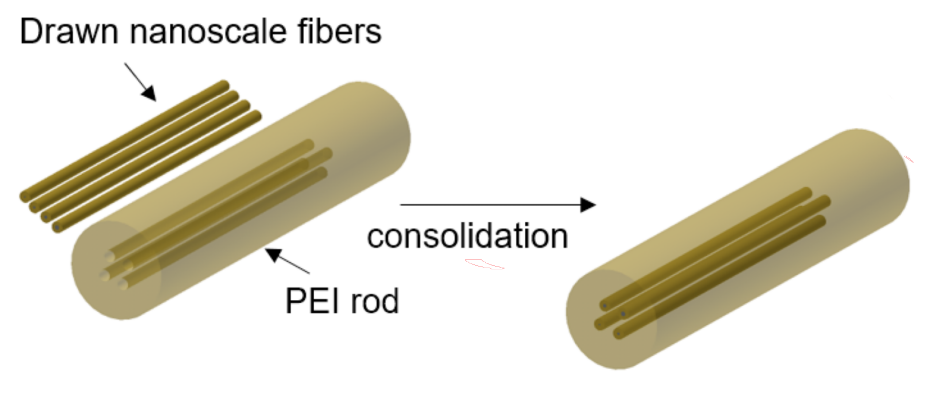Structured nanoscale metallic glass fibers
Publications
A collaboration between researchers at EPF Lausanne and the ETH Zurich Laboratory of Metal Physics and Technology has shown that thermal drawing of metallic glasses in a polymer matrix generates conducting fibers with arbitrary transverse geometries, micro- and nanoscale feature sizes, and extreme aspect ratios. These fibers will have unique applications in flexible electronics and neuroscience. The results are presented in Nature Nanotechnology.

Micro- and nanoscale metallic glasses (MGs) offer exciting opportunities in science and technology and have potential applications in micro-engineering, healthcare, microelectronic devices and optics. Thus far, however, the generation of such structured micro- and nanoscale MG fibers has been underexploited due to various scientific and technological challenges, which involve process-induced deformation and size effects that influence the crystallization kinetics and flow behavior of the MG-forming alloy.
In the framework of a collaborative study conducted by various research groups at EPF Lausanne and the ETH Zurich Laboratory of Metal Physics and Technology (LMPT), the authors of the Nature Nanotechnology article report on a scalable approach for producing micro- and nanoscale MGs in a flexible polymer fiber, based on thermal co-drawing of the MG within a polymer matrix of matched rheological properties. The authors demonstrate that the in-fiber electrically conductive MGs produced in this way reveal controllable feature sizes down to a few tens of nanometers and aspect ratios greater than 1010, predisposing them for versatile applications in optoelectronics, smart textiles and neuroscience. One of the latter applications is an implantable MG-based fiber probe that has already been tested in vivo for deployment as a stable brain-machine interface. By deploying the structured nanoscale MGs described, the authors have also been able to determine fundamental properties such as size-dependent flow and size-dependent crystallization at the nanoscale.
- Structured nanoscale metallic glass fibres with extreme aspect ratios, W. Yan, I. Richard, G. Kurtuldu, N. D. James, G. Schiavone, J. W. Squair, T. Nguyên-Dang, T. Das Gupta, Y. Qu, J. D. Cao, R. Ignatans, S. P. Lacour, V. Tileli, G. Courtine, J. F. Löffler, F. Sorin, Nature Nanotechnol. (2020). external pageDOI:10.1038/s41565-020-0747-9call_made
- Metallic-glass fibres: Fine fibres with multifunctionality, News & Views article by A. Lindsay Greer, Nature Nanotechnol. (2020). external pageDOI:/10.1038/s41565-020-0725-2call_made
- Laboratory of Metal Physics and Technology, ETH Zurich
- external pageLaboratory of Photonic Materials and Fibre Devices, EPF Lausannecall_made
- external pageCenter for Neuroprosthetics and Brain Mind Institute, EPF Lausannecall_made
- external pageDefitech Center for Interventional Neurotherapies, University Hospital Lausanne, Univ. of Lausanne, and EPF Lausannecall_made
- external pageBertarelli Foundation Chair in Neuroprosthetic Technology, EPF Lausannecall_made
- external pageInstitute of Materials, EPF Lausannecall_made
- external pagePress release by EPF Lausannecall_made
